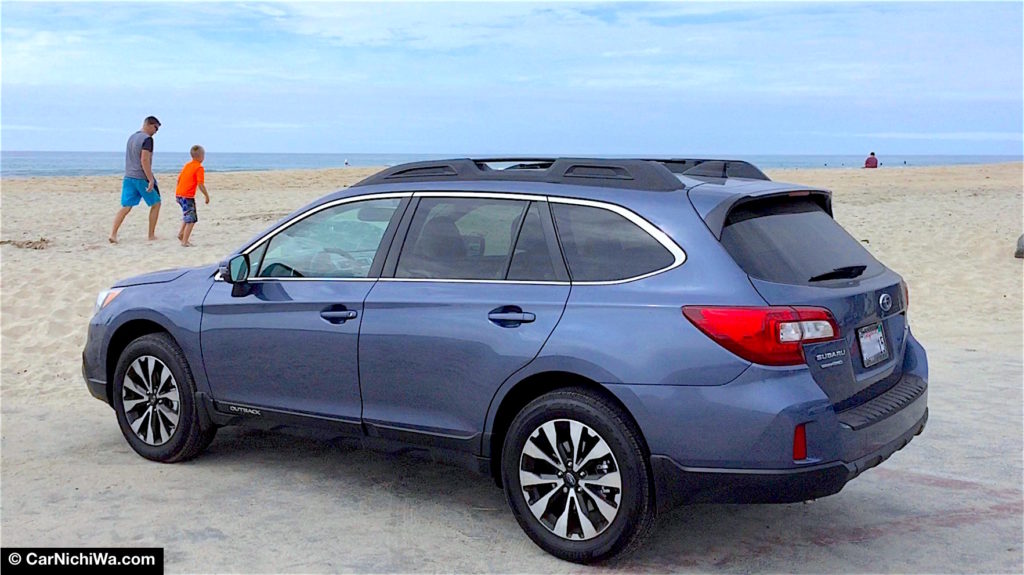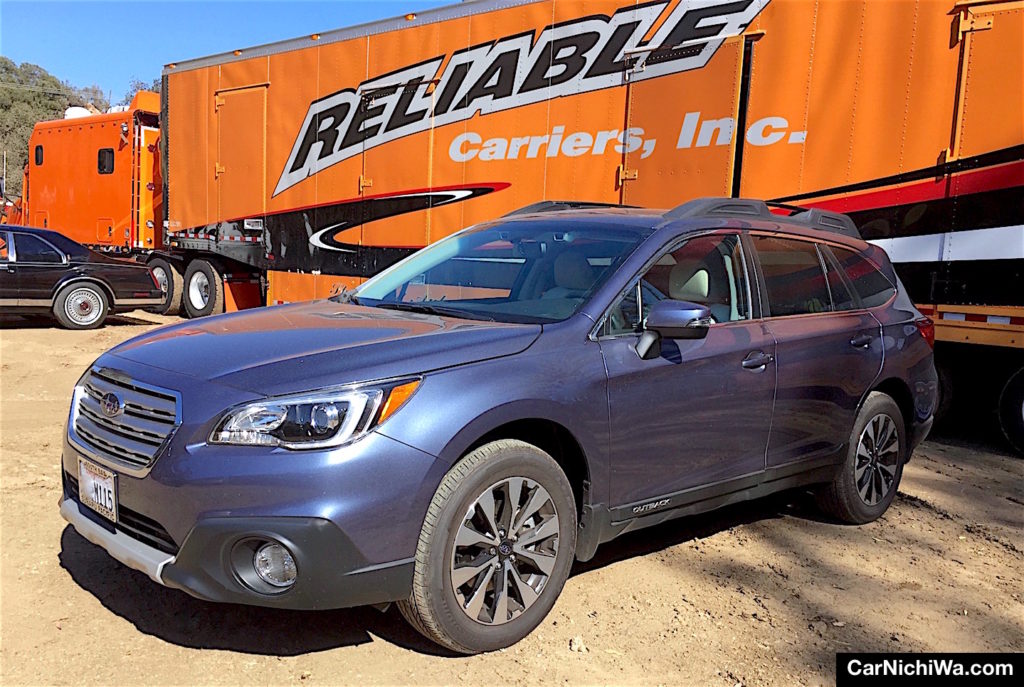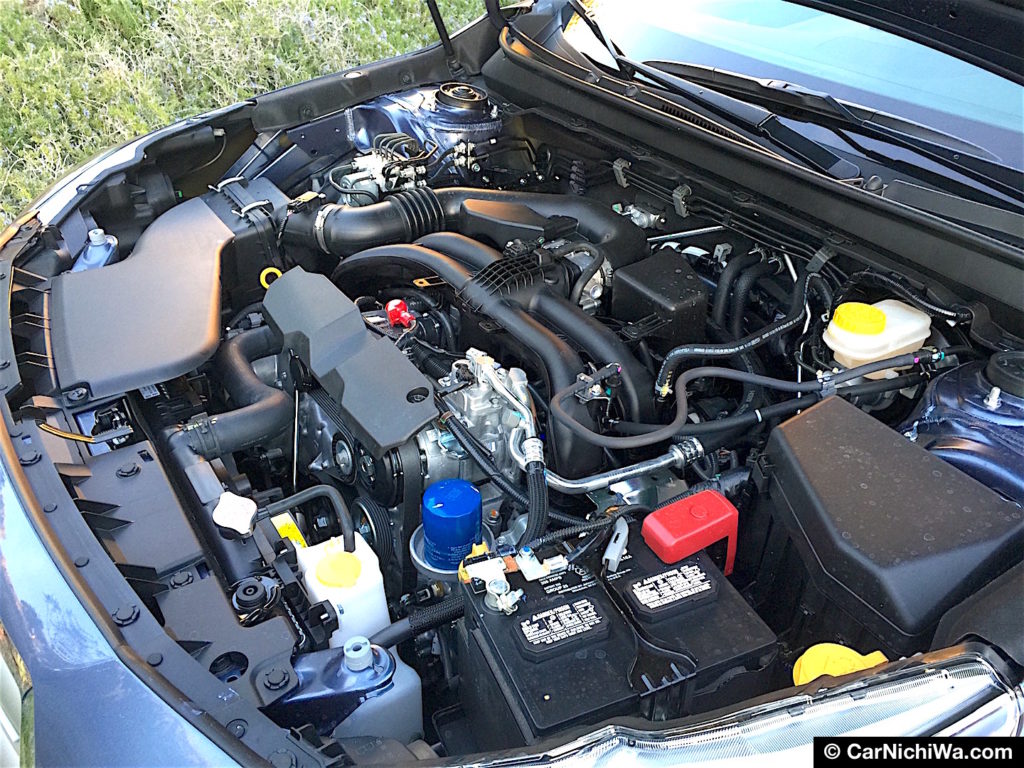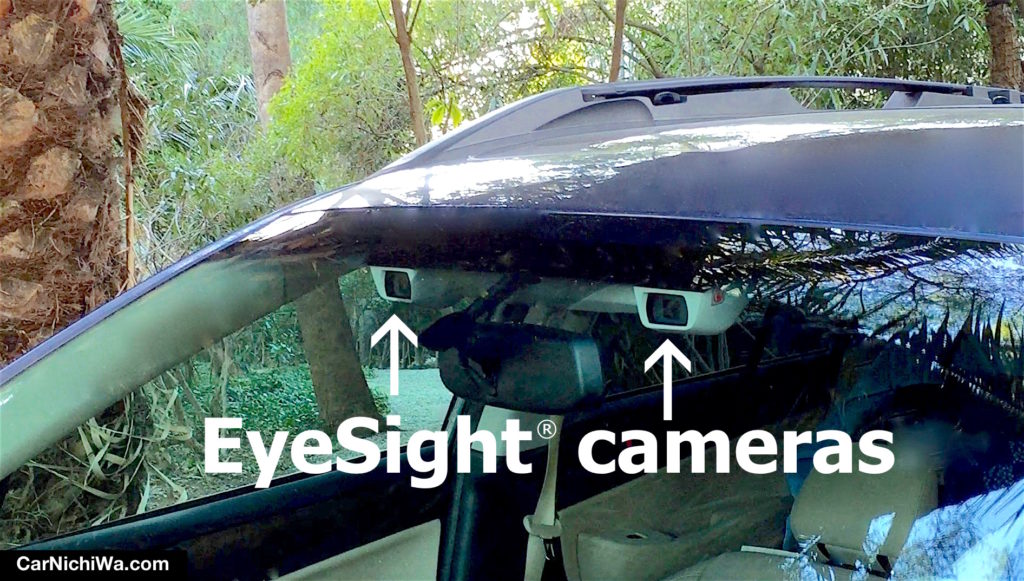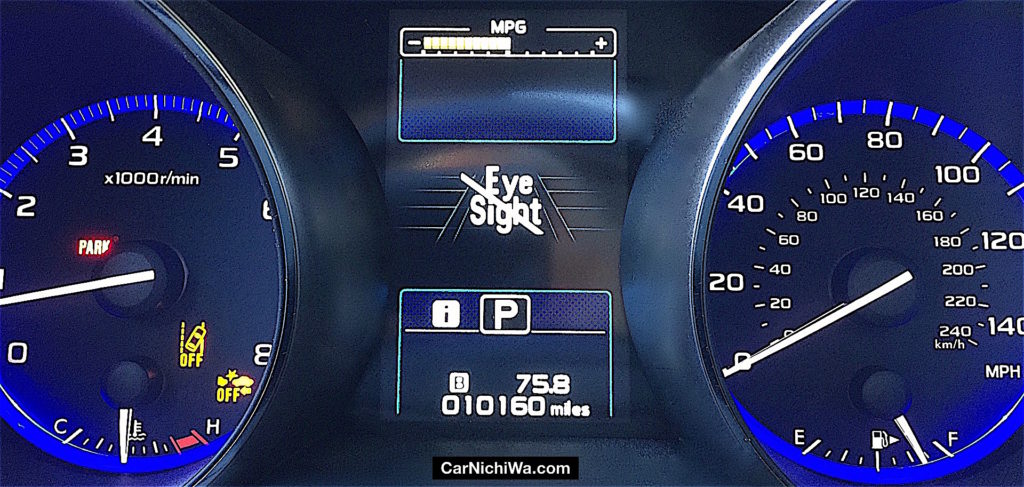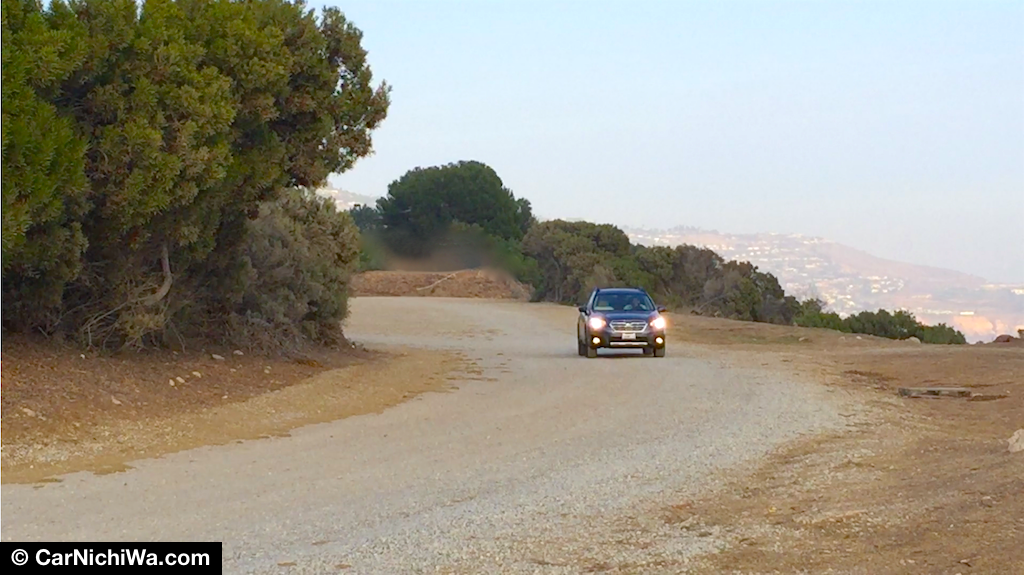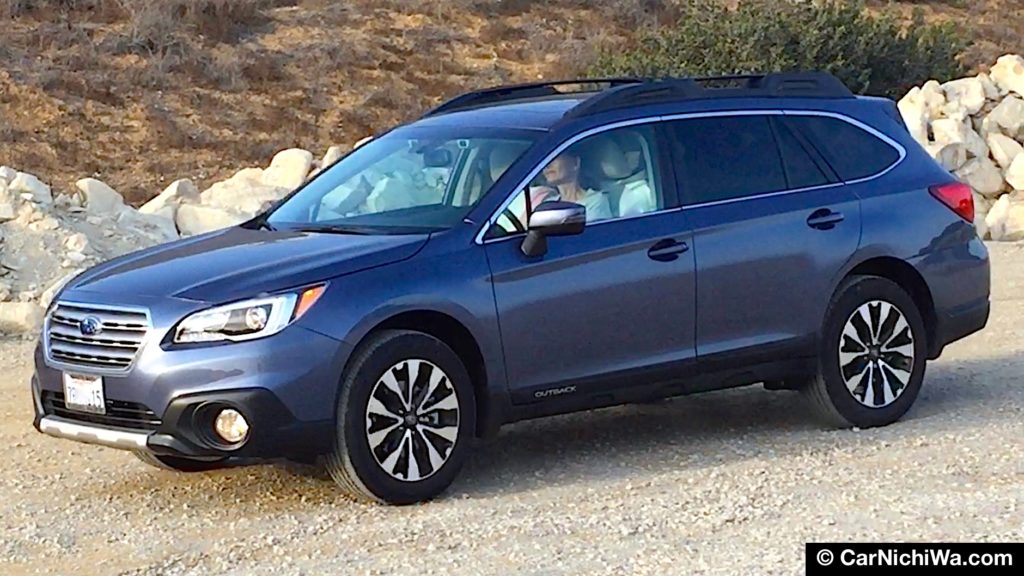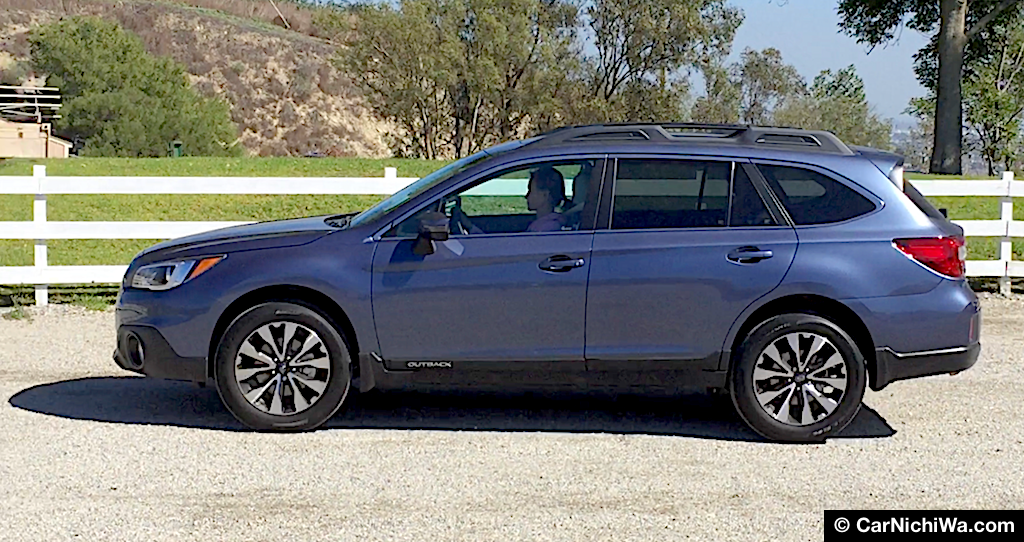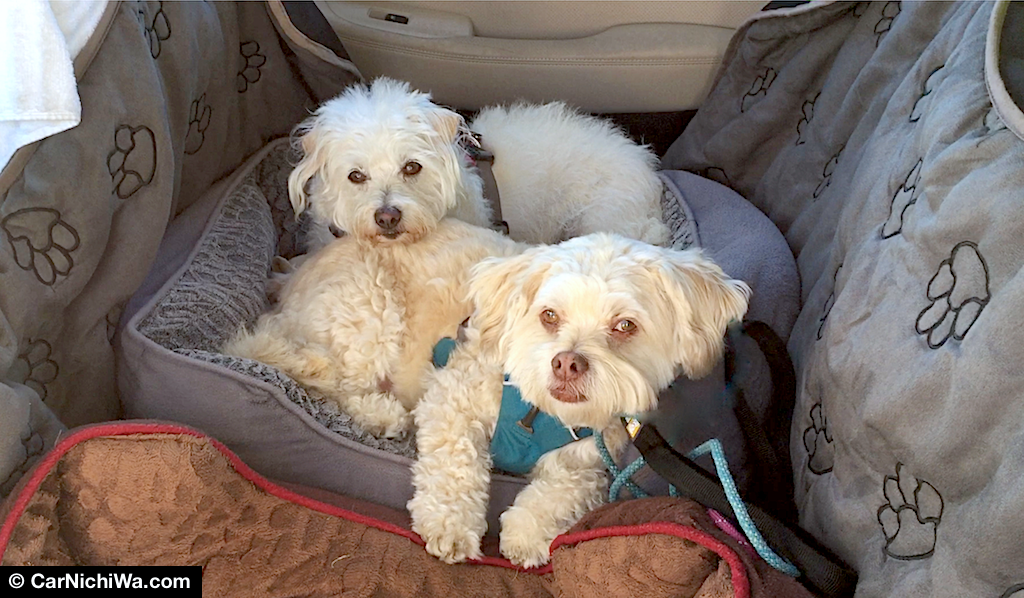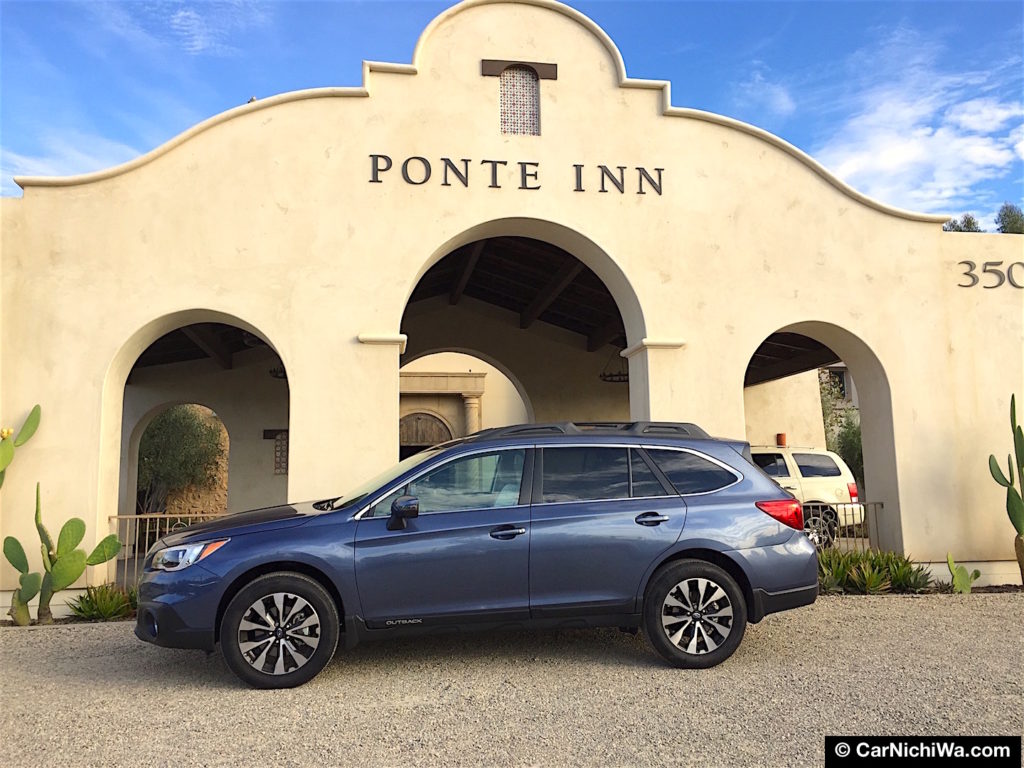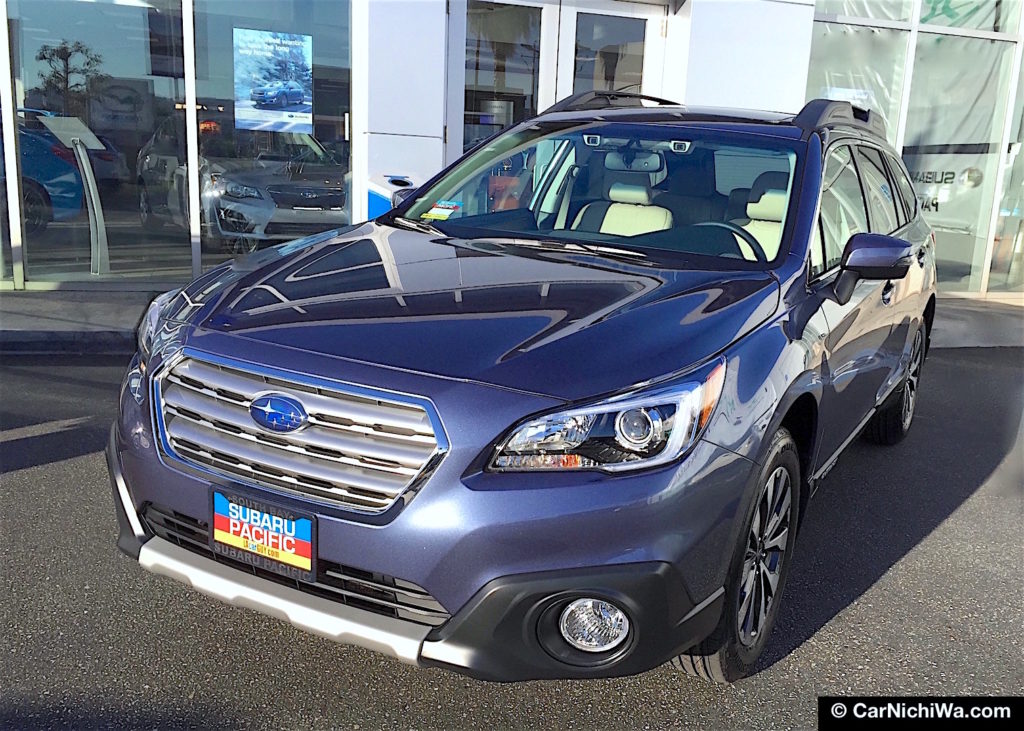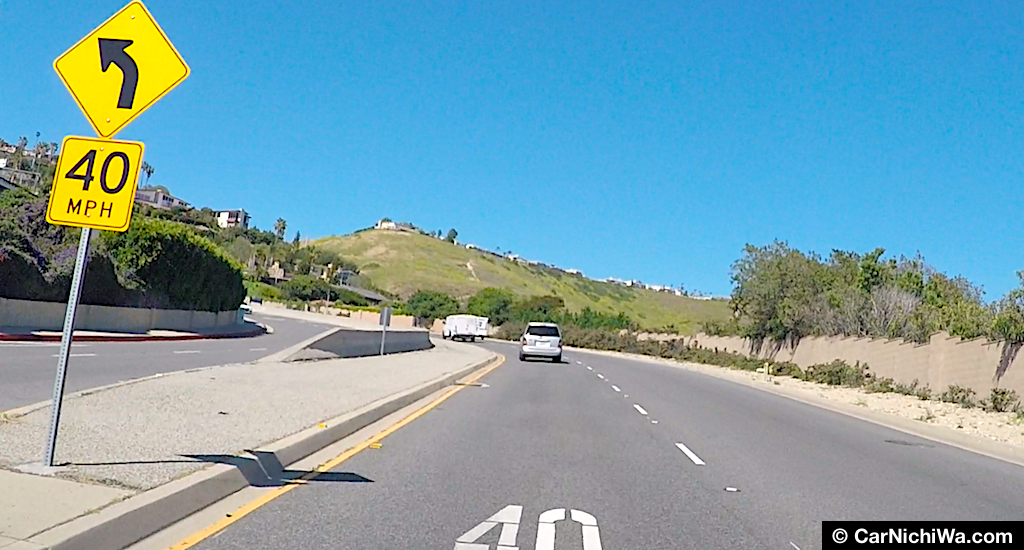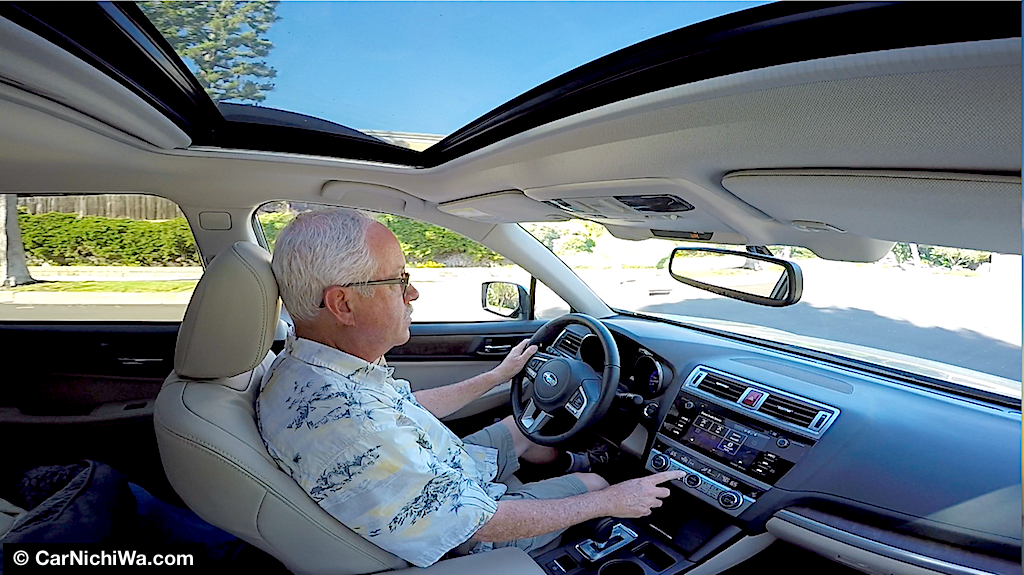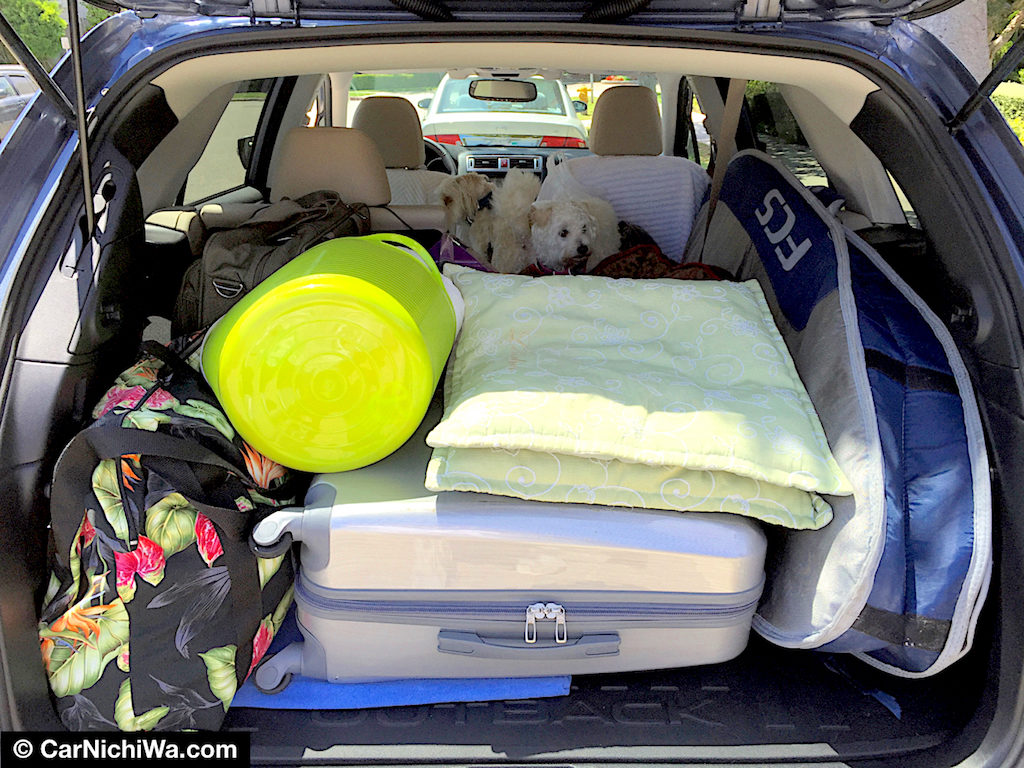By Steve & Tamami Laser
One year ago we decided to lease a new vehicle and report on the long-term ownership experience. As we mentioned in our first story, we selected the 2016 Subaru Outback because it fit both our lifestyle and budget. So after a year of driving, let’s take a look at the top five things we like and those that could use improvement.
During the first year, we travelled more than 8,000 miles. Most of it was our daily routine running around Los Angeles and Orange counties. We did take time out to make three trips to the San Diego area. In the above photo, we parked on the sand at the edge of a parking lot in Carlsbad to enjoy the nice weather and watch the surfers.
Join us in our above video as we recap our fist year with the Outback. We highlight our top five “likes” and then cover a trio of topics that we feel could use improvement.
As we mentioned previously, our lease has a cap of 10,000 miles per year. If we go over that, it will get expensive when we return the car to the dealer at the end of the lease. So we did spend time in other cars during the year. Otherwise we would have easily exceeded the mileage limit and have to curtail our driving in the remaining two years.
Outback “Like” Number 1 – Reliable
While we didn’t count the exact number of times we drove the Outback we estimate that we’ve pressed the “start” button more than 1,000 times without a single failure. The only minor glitch that occurred during the first year was a noisy fan belt. The car ran fine, it just sounded like there was a cat fight under the hood. Our dealer, Subaru Pacific, replaced the drive belt under warranty.
Talk about a perfect photo opportunity. We parked the Outback during a media event at Calamigos Ranch in Malibu, got out of the car, and realized that a big “Reliable” transporter was parked behind us. This photo perfectly sums up our yearlong experience with the Outback (it’s reliable). By the way, we’ve used Reliable Carriers several times (not for the Outback) to transport our own cars across the country.
During the first year, we went back to the Subaru dealer three other times. Two visits were for regular scheduled maintenance including oil and filter changes, tire rotation and multi-point inspections. Another was a recall to update the software. The total cost for the first year’s maintenance was $0. As part of our lease agreement, regular scheduled service was free while the other two visits were covered under warranty.
We check the oil level once a month and have not needed to add any oil between changes. Of course, we do need to add gas. We averaged 22.7 miles per gallon during the first year. We think that’s pretty good since most of our driving is in stop-and-go traffic. As we’ve mentioned before, we also drive up the steep hills in our neighborhood every day.
Like Number 2 – EyeSight Driver-Assist System
In our opinion, Subaru’s advanced EyeSight system is money well spent. When we leased our 2016 Outback 2.5i Limited, EyeSight was included with an option package on our car that also added a power moonroof, navigation system and keyless start. EyeSight driver-assist features include a Pre-collision Braking System, Lane Keep Assist, Lane Departure Warning and Adaptive Cruise Control.
The stereo cameras mounted near the inside rearview mirror do a splendid job monitoring the road ahead. If we drive out of our lane without signaling, it lets us know with visual and audible alerts. It’s so smart that it even plays a little tune if we’re stopped at a light and the car ahead of us moves (and we don’t).
There are limitations, of course. For example, when it’s really foggy and it can’t see lane markers or other cars, the system shuts off and lets us know with warning symbols in the instrument cluster (shown above).
Blind Spot Detection and Rear Cross-traffic Alert are standard features on our Limited. Using radar sensors, it alerts us if a vehicle is in our “blind spot.” It also comes in handy when backing up by letting us know if another vehicle, a pedestrian or a bike is crossing behind the car.
Like Number 3 – Symmetrical All-Wheel Drive
Since we live in Southern California and enjoy the mild weather, we really don’t need a car with all-wheel drive. However, it’s standard on the Outback and nearly all Subaru models sold in the U.S. We had a super rainy season (for L.A.) which provided plenty of opportunities to test AWD on slick roads.
Instead of sliding around, the Outback goes in the direction it’s pointed without drama. Subaru’s Symmetrical All-Wheel Drive also pays dividends on completely dry roads by eliminating the “torque steer” that we used to feel in our previous front-drive car when accelerating out of turns.
To see how the Outback performs on light-duty off-roading, we drove on dirt trails and gravel roads in our area. Thanks to the AWD system and 8.7-inches of ground clearance, the Outback goes everywhere we ask without complaining. We didn’t try steep or rugged trails since we don’t want to damage the car or scratch the paint. It’s not a substitute for a Jeep Wrangler, of course, yet it goes where most passenger cars fear to tread.
Like Number 4 – Ride Quality
With its four-wheel independent suspension and long wheel travel (up and down range of motion) the Outback provides a supple ride quality that soaks up bumps and potholes. Some folks might feel that the Outback’s ride is too soft. We have experienced floating motions, yet it doesn’t equal the seasick feeling that our previous truck-style crossover (not a Subaru) generated.
Our canine kids travel with us most of the time. They enjoy the Outback’s comfortable ride, spacious cabin, plus the aftermarket beds and “hammock” that we installed. The latter discourages them from climbing into the front seats or the cargo area.
Sometimes they like to ride in the same bed (above) – we’re not sure why. It’s easy to remove the hammock and beds, fold down one side of the rear seat, and transport long items like a surfboard that fits inside the car (the dogs don’t surf; our human friends do).
We also ventured inland for a wedding in Temecula at a beautiful winery. Long distance drives (compared to our local sprints around our home base) are a breeze in the Outback. During this drive, we tried out the Adaptive Cruise Control that helps reduce driver fatigue on the highway.
Like Number 5 – Dealer
We selected Subaru Pacific because it’s the closest Subaru dealer to our home. This is the first Subaru we’ve owned and we’re happy to report that this dealer is a pleasant place to do business. We selected a car in the back lot that was not prepped for delivery. It was late in the day, yet our salesperson, Jeff, and the Service Department had the car ready for us after we signed the paperwork in the F&I office. Jeff gave us a thorough walkaround to demonstrate the car’s features. He also followed up after delivery with phone calls and emails to make sure that we were satisfied.
Our return visits for service and warranty repair have also been handled professionally by the Service Department. In addition to no out-of-pocket expenses, we’re also treated to free car washes which is a nice touch. While the dealer has since moved from Torrance (above) to Hawthorne, a bit farther away, the benefits include more space including a larger customer waiting area where we’re able to use our laptop computer and relax (or work on stories like this) while waiting for our car.
What About “Dislikes?” – Room for Improvement
As with any long-term relationship, little things can become troublesome over time. Our list is pretty short, yet three things continue to bug us.
Lack of Power On Hills – The 4-cylinder Outback does fine on level ground. Yet with 175 horses and 174 lb.-ft. of torque moving a 3,638-pound car, the engine feels strained going up steep hills (we go from sea level to 1,200 feet nearly every day). While the steering-wheel-mounted paddle “shifters” for the Continuously Variable Transmission do help, we still crave more power, especially when passing slower-moving traffic. If we had it to do over again, we would have selected a 6-cylinder Outback. That engine puts out a more satisfying 256 hp and 247 lb.-ft. (yet it costs more to buy or lease and consumes more fuel).
Front Headrests – As we’ve mentioned before (and showed in our video), the headrest pushes our editor’s head too far forward. We’ve tried adjusting it up and down but that doesn’t help. We also used the tilt function, yet that brings the headrest even farther forward. Our solution has been to strap an aftermarket cushion to the backrest – it doesn’t look great, but it works. (The above photo is an extreme wide-angle view; the seat isn’t reclined as much as it appears.)
Fuel Filler Door – Some cars have the fuel filler door on the left, which makes it easy to use a self-service gas station pump. Others, like our Outback, have it on the right. That means whenever we pull into a gas station, we have to maneuver close to the pump on the right – and avoid getting too close. The fuel door release is located on the floor on the driver’s side. If it fails to release the door the first time, we have to walk back to the driver’s side of the car and try again. This is a minor inconvenience.
The Bottom Line – What’s the Verdict?
After one year of ownership and about 8,000 miles of driving, we still give the Subaru Outback a “Thumbs Up.” It’s the right size for us, it’s been very reliable, we like the EyeSight system and AWD. We’re willing to live with the minor issues as noted. We’ve owned more than 30 vehicles over the years and have discovered that there is no perfect car. Yet the Subaru Outback comes pretty close. All we need is a bit more power (perhaps a turbo-4 for the U.S. market?) and a front headrest redesign. And as long as we’re at it, a larger center display screen would be nice, too, along with some extra features like Apple CarPlay®.
We have another 24 months to go on our lease. So it’s time to load up our gear and head out on the road. Thanks for joining us and we’ll see you next time.
Visit the following links for our additional story updates:
2016 Subaru Outback Long-Term Review Part 5 – Saying Goodbye and Thanks After Three Years
2016 Subaru Outback Long-Term Review Part 4 – 10 Things We Love After Two Years
2016 Subaru Outback Long-Term Review Part 2 – Enjoying The First Six Months
2016 Subaru Outback Long-Term Review – The “Ultimate Test Drive” Begins
The 2016 Outback test car in this story is privately leased by the editor of CarNichiWa.com
Story, photos and video © 2017 CarNichiWa.com
